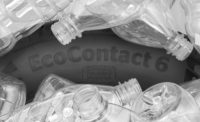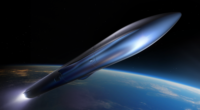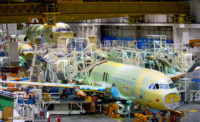GOTHENBURG, Sweden—Volvo Group recently unveiled the world’s first vehicle—a load carrier used in mining and quarrying—made of steel produced without the use of fossil fuels. The company also announced that more vehicles will follow in 2022 in what will be a series of concept vehicles and components using fossil-free steel from SSAB.
Thierry Breton, EU commissioner for internal market, and Ibrahim Baylan, the Swedish minister of enterprise and innovation, were at the event, which was hosted by Martin Lindqvist, CEO of SSAB, and featured other speakers.
“This initiative with SSAB sets the benchmark for a fossil-free future," says Martin Lundstedt, President and CEO Volvo Group. "Just as the nations of the world come together at COP26 to address climate change, so too must organizations and industries work in collaboration to develop innovative new solutions for a greenhouse gas emission free future. Volvo Group is committed to pioneering partnerships such as this with SSAB to develop attractive, safe and efficient new vehicles and machines that pave the way for a more sustainable transport and infrastructure system adopted for the future.”
Volvo is aiming to achieving net zero value chain greenhouse gas emissions by 2040, according to Lundstedt. Along with the electrification of its vehicles and machines, Volvo hopes to reduce the carbon footprint of its entire supply chain.
“Having the world´s first actual vehicle made using SSAB´s fossil-free steel is a true milestone," says Lindqvist. "Our collaboration with Volvo Group shows that green transition is possible and brings results. Together, we will continue reducing climate impact all the way to the end customer, while ensuring that our customers get high-quality steel. We look forward to continuing to work with Volvo Group in research and development to produce more fossil-free steel products.”
A move toward green steel is an important step for Volvo Group, as well as the transport and infrastructure industries. This is because around 70 percent of a truck’s weight comes from steel and cast iron, with the figure for Volvo machines even higher. This first concept machine, produced at Volvo CE’s facility in Braås, is just the start, with smaller-scale series production planned by 2022, and mass production set to follow afterward.



